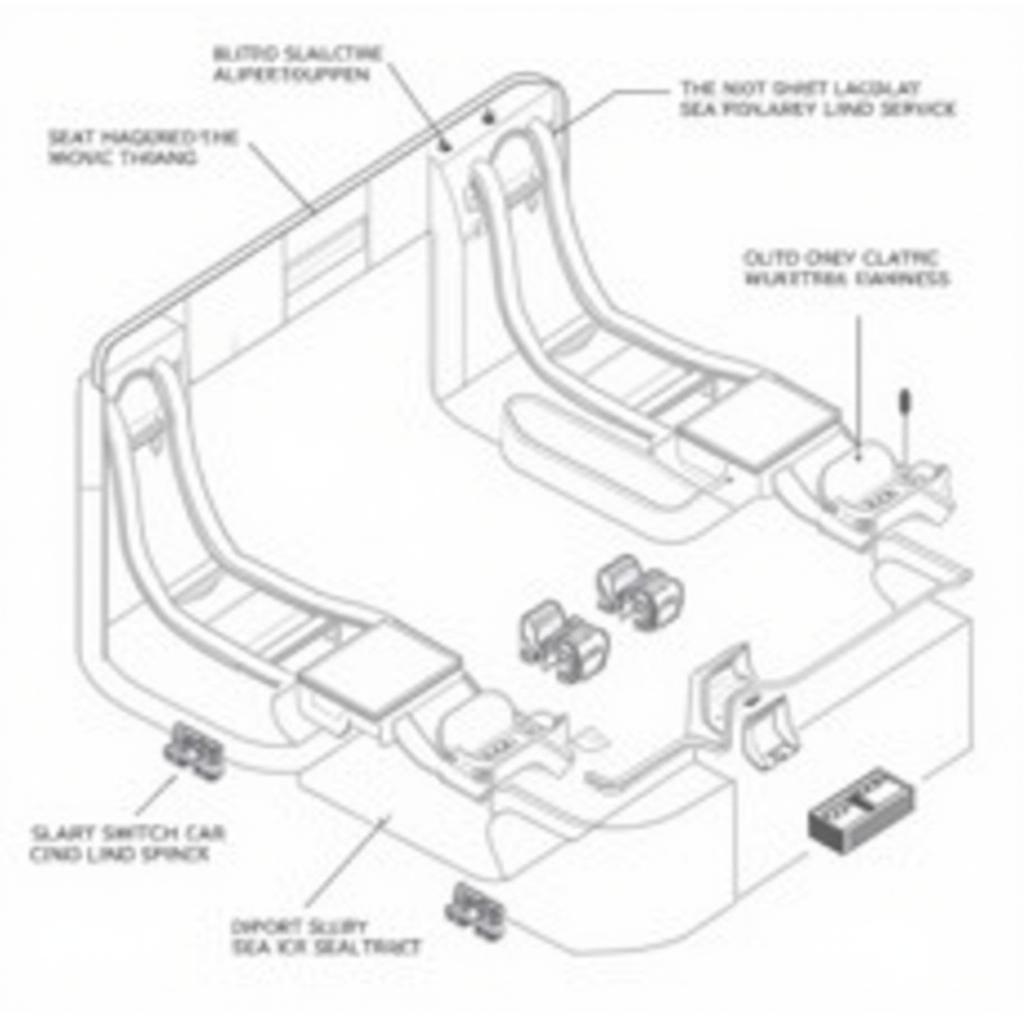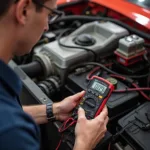Power seats are a luxurious convenience—until they stop working. A malfunctioning car electric seat can be a major inconvenience, leaving you stuck in an uncomfortable position. Fortunately, most car electric seat repairs are straightforward and can be done by a qualified mechanic.
This comprehensive guide will delve into the intricacies of car electric seat repair, providing you with the knowledge to diagnose and potentially resolve the issue. We’ll explore common problems, potential causes, and when professional help is necessary.
Understanding Your Car’s Electric Seat System
Before attempting any DIY fixes, it’s essential to grasp the components of your car’s electric seat system:
- Seat Switch: The most obvious part, the switch, sends signals to the seat module to move the seat in various directions.
- Seat Module: This electronic brain receives commands from the switch and activates the appropriate motors.
- Motors: Electric motors power the various seat adjustments, including forward/backward, up/down, and backrest tilt.
- Seat Tracks: These metal rails guide the seat’s movement.
- Wiring Harness: This network of wires carries electrical signals between all components.
Common Car Electric Seat Problems and Their Causes
A variety of issues can arise with electric car seats. Recognizing the symptoms helps pinpoint the problem:
1. Seat Won’t Move in Any Direction
- Blown Fuse: The most common culprit is a blown fuse in the vehicle’s fuse box.
- Faulty Seat Switch: Worn-out contacts within the switch can interrupt signal transmission.
- Seat Module Failure: A malfunctioning module cannot relay commands to the motors.
2. Seat Moves Only in One Direction
- Faulty Seat Switch: A damaged switch may only send signals for a specific direction.
- Motor Failure: A burnt-out motor dedicated to a particular movement will render that direction inoperable.
3. Seat Moves Slowly or Erratically
- Weak Motor: Over time, motors can weaken, leading to sluggish movement.
- Seat Track Obstruction: Debris or foreign objects lodged in the seat tracks can hinder smooth operation.
- Wiring Issue: Damaged or corroded wires can disrupt signal flow, causing inconsistent movement.
Troubleshooting Car Electric Seat Problems
Before rushing to a mechanic, you can attempt some basic troubleshooting steps:
- Check the Fuse Box: Consult your vehicle’s owner’s manual to locate the fuse box. Look for a blown fuse related to the power seats and replace it if necessary.
- Inspect the Seat Switch: Examine the switch for visible damage or loose connections. Try cleaning the switch with electrical contact cleaner.
- Clear Seat Tracks: Remove any visible debris or obstructions from the seat tracks.
“Remember,” cautions John Miller, a seasoned automotive electrician with over 20 years of experience, “while these initial checks can be helpful, dealing with electrical components requires caution. If you’re uncomfortable working with electrical systems, it’s best to seek professional assistance.”
When to Seek Professional Car Electric Seat Repair
If basic troubleshooting fails to resolve the issue, it’s time to consult a qualified mechanic specializing in car electrical repairs near me. Professional mechanics have the expertise and diagnostic tools to pinpoint and address more complex problems, such as:
- Seat Module Replacement: Diagnosing and replacing a faulty seat module requires specialized equipment and knowledge.
- Motor Replacement: Replacing a burnt-out seat motor involves accessing and removing the seat, a task best left to professionals.
- Wiring Harness Repair: Repairing or replacing a damaged wiring harness necessitates expertise in automotive electrical systems.
Car Electric Seat Repair Cost
The cost of car electric seat repair varies depending on the complexity of the problem and the labor rates in your area. Simple repairs, such as fuse replacements, can cost as little as $20. However, more complex repairs, like module or motor replacements, can range from $100 to $500 or more.
Preventing Future Car Electric Seat Problems
While not all problems are preventable, these tips can help maintain your car’s electric seat system:
- Regular Cleaning: Keep the seat tracks free of debris and crumbs.
- Gentle Use: Avoid slamming the seat controls or putting excessive pressure on the seat adjustments.
- Address Issues Promptly: If you notice any problems, have them checked by a qualified mechanic sooner rather than later.
Conclusion
Electric car seats offer unparalleled comfort and convenience. By understanding the common problems, performing basic troubleshooting, and knowing when to seek professional car electric seat repair, you can keep your seats functioning smoothly for years to come. Remember, a comfortable driving experience starts with a properly working seat.



